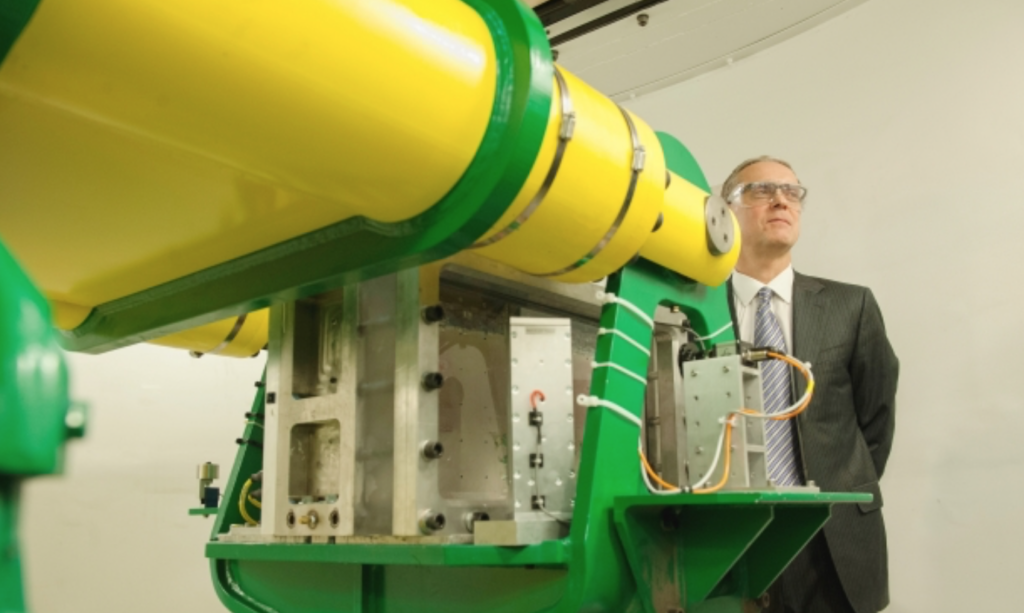
BY DAVID HOWELL, EDMONTON JOURNAL
Cutting-edge research into new ways of recovering bitumen, coal bed methane, shale gas and other unconventional hydrocarbons is the focus of a $15-million collaboration between the University of Alberta, government and industry.
Rick Chalaturnyk, a U of A professor of geotechnical engineering, was named Tuesday as the inaugural holder of the Foundation CMG Endowed Chair in Reservoir Geomechanics.
The research chair is an integral component of a new research program aimed at developing hydrocarbon recovery technologies that are economically, environmentally and socially sustainable, said David Lynch, the U of A’s dean of engineering. Pulling together the program’s components took seven years.
“This is, as we would all recognize, an incredibly important area of research for the development of Alberta and beyond,” Lynch said at the announcement.
“This is a worldwide phenomena and the importance of it cannot be understated in terms of the safe and responsible development of our resources.”
Chalaturnyk and his team of 39 researchers and technical staff are investigating the properties and behaviours of oilsands, caprock and other materials during the process of recovering unconventional oil and gas from deposits deep underground.
“At the heart of it, it really is about conducting some complex, high-temperature, high-pressure testing on all these classes of materials — oilsands, shales, carbonates — to improve our understanding of how these behave,” said Chalaturnyk, who is internationally recognized for his expertise.
His world-class laboratory — the Geomechanical Reservoir Experimental Facility — includes Western Canada’s only beam centrifuge, a high-temperature/pressure testing facility, and a 3-D printer that can create uniform rock samples from sand.
The beam centrifuge can spin a 500-kilogram payload at 280 revolutions per minute, simulating high-pressure conditions under which caprock can fail.
Two incidents in Alberta’s oilpatch highlight the need for the research focus, Chalaturnyk said during a tour of the lab.
In 2006, an explosive release of steam at Total E & P Canada’s Joslyn Creek steam-assisted gravity drainage (SAGD) project north of Fort McMurray caused a surface disturbance about 125 metres by 75 metres.
Rocks flew hundreds of metres from a crater caused when the steam shot up. An investigation showed that a breach in the rock above the bitumen layer was caused by the company using steam pressure above approved levels.
The second event was in 2013, when CNRL reported four incidents of bitumen flowing to the surface at its Primrose East and South locations northwest of Cold Lake. About 1.2 million litres of bitumen emulsion was recovered from a 21-hectare area. The Alberta Energy Regulator said the incidents were likely caused by CNRL’s steaming strategy and potential well bore issues.
About 60 per cent of the program’s research is related to these types of events, Chalaturnyk said.
Funding partners include Athabasca Oil, BP Canada Energy, Brion Energy, Canadian Natural Resources Ltd., Cenovus, ConocoPhillips, Foundation CMG, Nexen, Shell Canada, Statoil Canada and Suncor Energy.
Government funding is from the Natural Sciences and Engineering Research Council of Canada, Alberta Innovates — Technology Futures, and Alberta Innovates — Energy and Environment Solutions.
Calgary-based Foundation CMG, which funds research into oil and gas reservoir modelling, gave Chalaturnyk bridge funding in 2010 to get the program started.
“Today is a fun day,” Foundation CMG president Duke Anderson said. “I’m thrilled this day has finally arrived.”
Twitter.com/HowellEJ
© Copyright (c) The Edmonton Journal